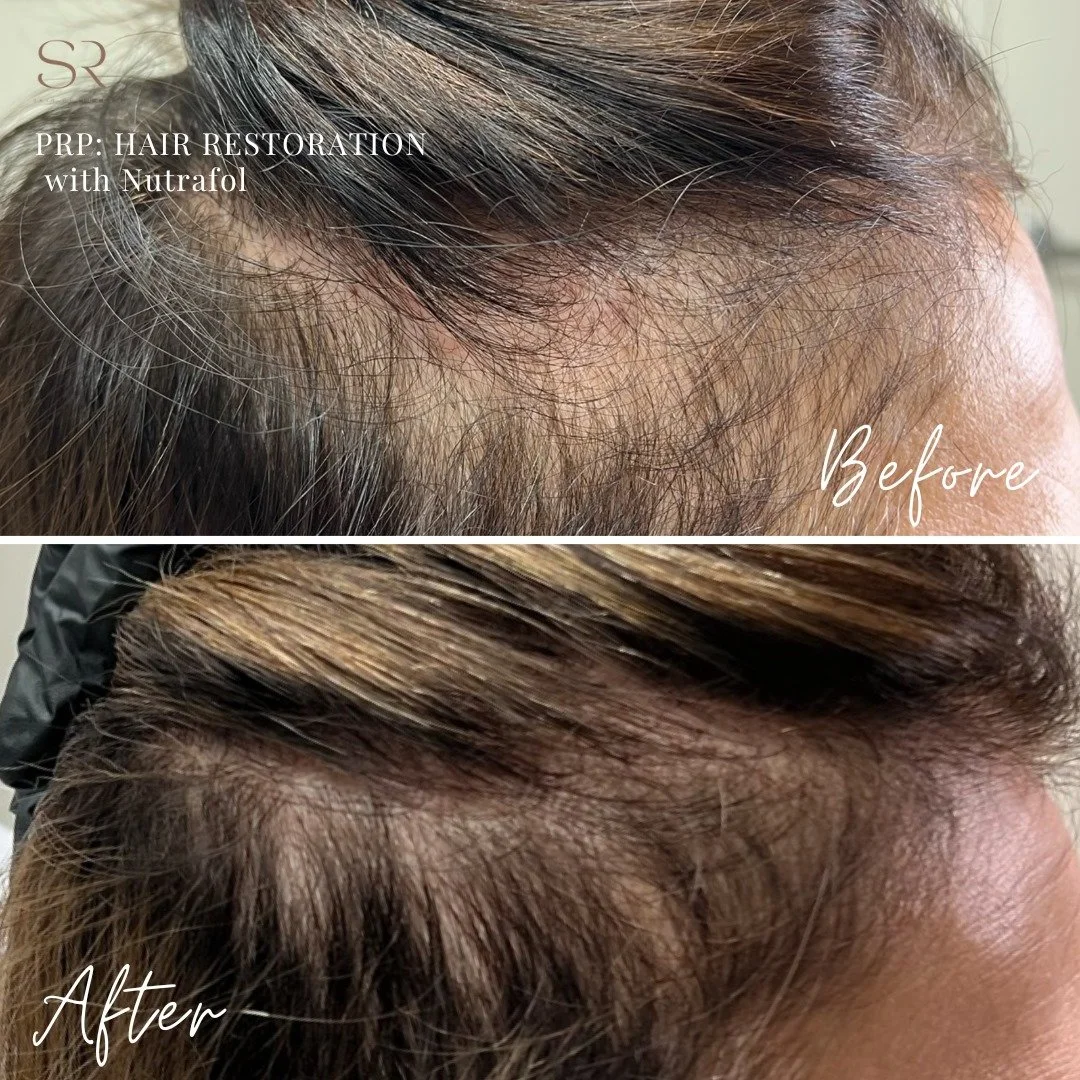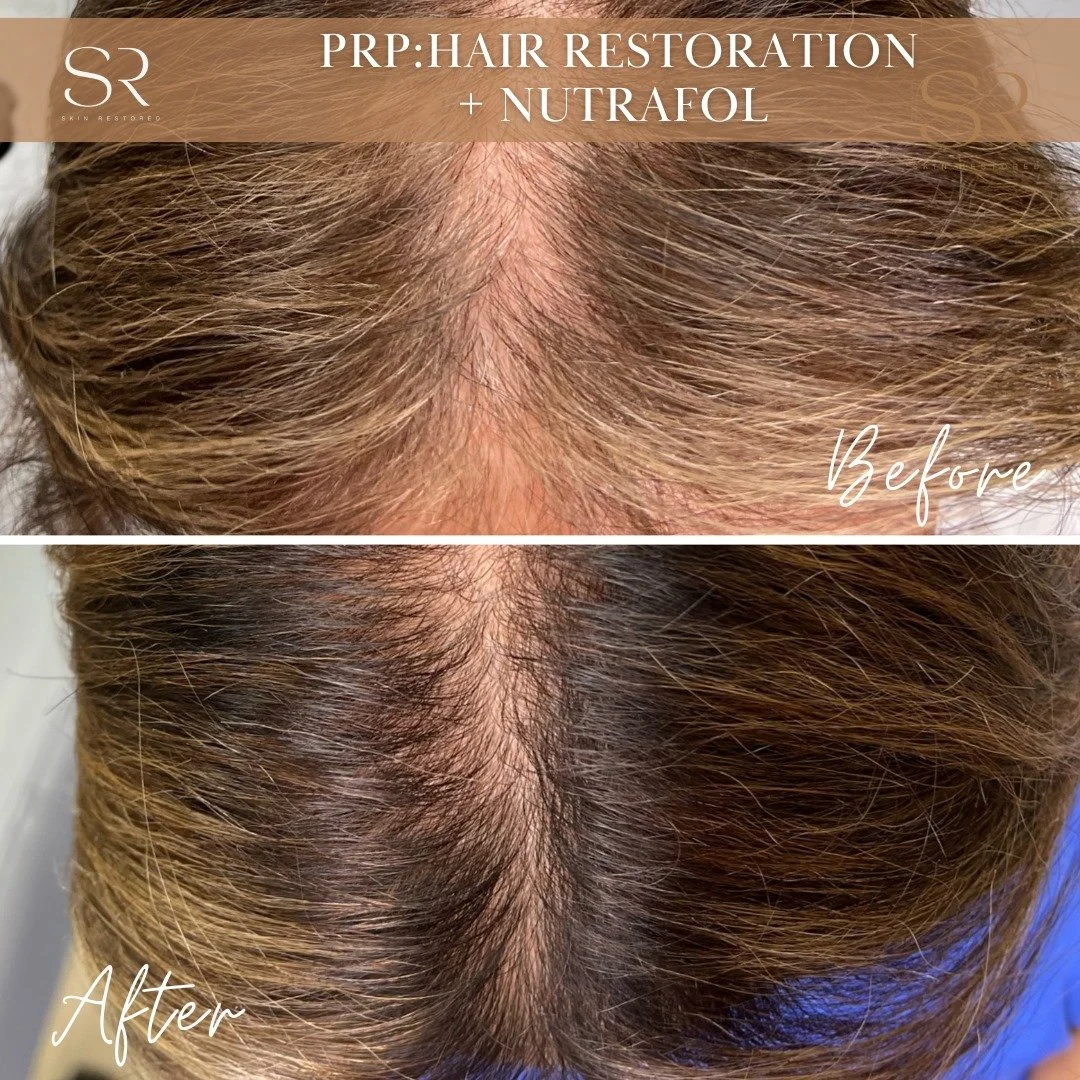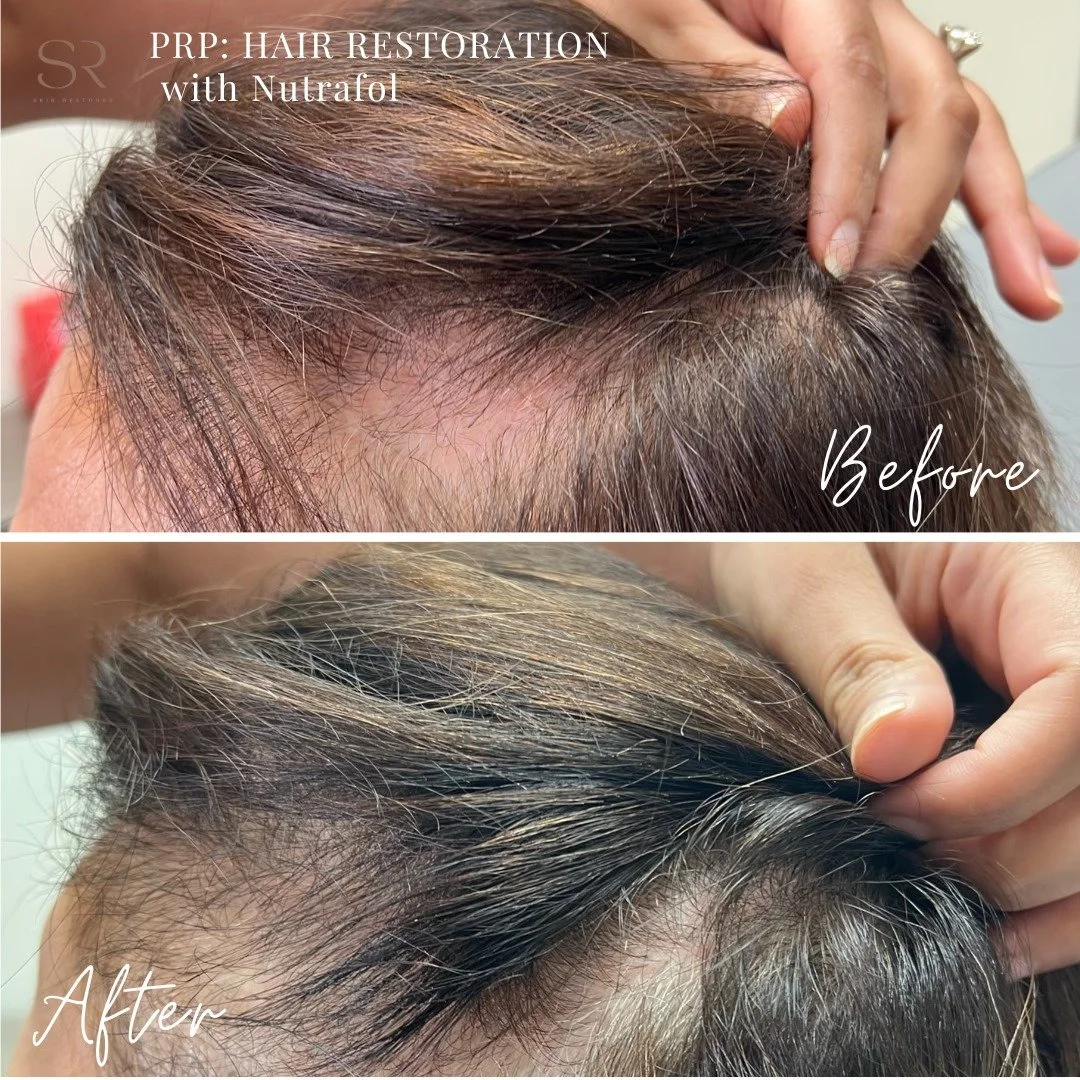PRP Injections
Discover the
Power of PRP
Platelet-Rich Plasma (PRP) is a revolutionary treatment that harnesses the body's natural healing abilities to rejuvenate and restore hair growth, combat hair loss, and improve hair density and quality.
Benefits of PRP Treatments
Stimulates Hair Growth
PRP encourages the body's natural healing process, promoting the growth of new, healthy hair follicles.
Reduces Hair Loss
The growth factors in PRP can help strengthen hair follicles, reducing hair thinning and loss.
Improves Hair Density and Thickness
PRP treatments can enhance hair volume and thickness, giving you fuller, more robust hair.
Minimally Invasive Procedure
PRP is a non-surgical treatment that uses your body's own platelets, making it a safe and natural option for hair restoration.
Enhances Hair Quality
PRP can improve the overall texture and appearance of your hair, making it healthier and more vibrant.
Before and After
TESTIMONIALS
Frequently asked questions (FAQs)
-
PRP injections involve using the patient's own blood, which is processed to concentrate platelets and growth factors. The resulting PRP solution is then injected into targeted areas to stimulate healing and rejuvenation.
-
PRP injections are commonly used to address a range of concerns, including skin aging, hair loss, tendon injuries, joint pain, osteoarthritis, and musculoskeletal conditions.
-
Platelets in PRP release growth factors that promote tissue repair, collagen production, and cellular regeneration. When injected into the body, PRP stimulates healing processes and accelerates tissue regeneration.
-
The procedure begins with a small blood draw from the patient, followed by centrifugation to isolate and concentrate the PRP. The PRP solution is then injected into the targeted area using a fine needle or cannula.
-
Since PRP is derived from the patient's own blood, the risk of allergic reactions or disease transmission is minimal. However, mild side effects such as swelling, bruising, or discomfort at the injection site may occur temporarily.
-
The number of PRP sessions required depends on the specific condition being treated and individual response. While some patients may notice improvement after a single session, a series of treatments is often recommended for optimal results.
-
There is typically minimal downtime associated with PRP injections, and most patients can resume their normal activities immediately after treatment. Some redness, swelling, or bruising at the injection site may occur but usually resolves within a few days.
-
The duration of PRP results varies depending on the treated area, the severity of the condition, and individual factors. Maintenance sessions may be recommended to sustain the results over time.
-
Yes, PRP injections can be combined with other aesthetic or medical treatments to enhance results. Your healthcare provider can customize a treatment plan based on your specific needs and goals.
-
While PRP injections are generally safe and well-tolerated, they may not be suitable for individuals with certain medical conditions or blood disorders. Consulting with a qualified healthcare provider is essential to determine if PRP therapy is appropriate for you.
Pre and Post care for PRP Injections
-
Stay Hydrated: Maintain proper hydration by drinking plenty of water in the days leading up to your PRP injection appointment. Hydrated skin can improve the effectiveness of the treatment.
Avoid Blood-Thinning Medications: To minimize the risk of bruising and bleeding, avoid taking blood-thinning medications such as aspirin, ibuprofen, and fish oil supplements for at least one week before your PRP treatment.
Discontinue Skincare Products: Stop using retinoids, alpha hydroxy acids (AHAs), beta hydroxy acids (BHAs), and other exfoliating agents for at least one week before your PRP injection appointment. These products can increase skin sensitivity and the risk of irritation.
Inform Your Provider: Inform your healthcare provider about any medical conditions, allergies, or medications you are currently taking before undergoing PRP injections. This information will help ensure your safety and optimal results.
-
Avoid Touching the Injection Site: Refrain from touching or rubbing the treated area for at least 24 hours after your PRP injections to minimize the risk of infection.
Protect the Skin: Avoid applying makeup, sunscreen, or skincare products to the treated area for at least 24 hours after PRP injections. Let the skin heal naturally to maximize the effectiveness of the treatment.
Use Gentle Skincare: After 24 hours, you can resume your regular skincare routine using gentle cleansers and moisturizers. Avoid harsh or abrasive products that may irritate the skin.
Apply Cold Compresses: If swelling or discomfort occurs, apply ice packs or cold compresses to the treated area intermittently for 10-15 minutes at a time. This can help reduce swelling and alleviate any discomfort.
Avoid Sun Exposure: Minimize sun exposure and protect the treated area with sunscreen or protective clothing for at least one week after PRP injections. Sun exposure can increase the risk of post-inflammatory hyperpigmentation.
Stay Hydrated: Continue to drink plenty of water to keep the body and skin hydrated, which can aid in the healing process and enhance the results of PRP injections.
Follow-up Appointment: Schedule a follow-up appointment with your healthcare provider as recommended to assess the results of your PRP treatment and address any concerns or questions you may have.
By following these pre and post-care instructions, you can optimize the results of your PRP injections and minimize the risk of complications. If you have any questions or experience any unusual symptoms after treatment, contact your healthcare provider for guidance.




